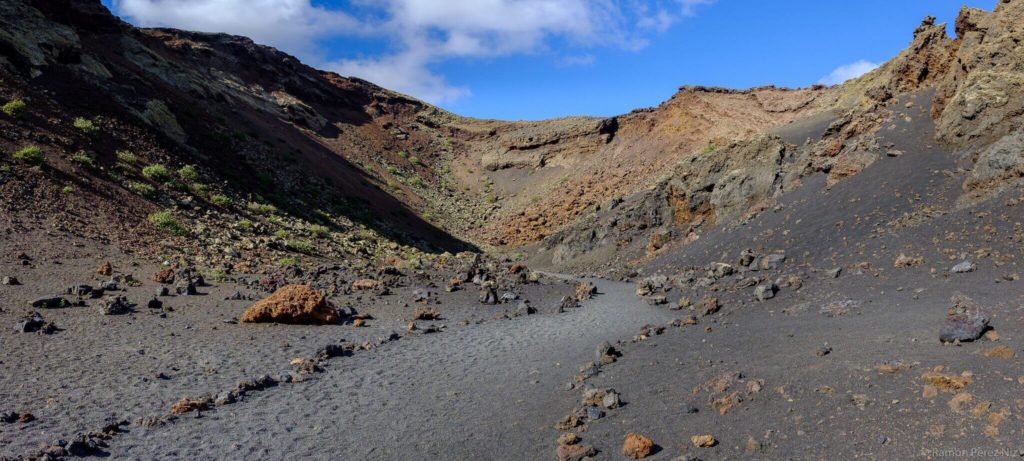One gloomy night, the night of 1 September 1730, between 9 and 10 pm, the Raven Volcano burst open and began to spew lava. The outburst was the beginning of the Timanfaya eruptions that, in different periods and intensities, transformed the physical reality of Lanzarote.
The parish priest of Yaiza, Andrés Lorenzo Curbelo, left a testimony of the events from the beginning of the eruptions until the population of the area had to emigrate between 1731 and 1732.
It read as follows:
«On the 1st of September (1730) between nine and ten o’clock at night the earth suddenly opened up near Timanfaya, two leagues from Yaiza. On the first night a huge mountain rose from the bosom of the earth and from the apex flames escaped which continued to burn for nineteen days».

The two leagues to which the parish priest referred led to the interior of the Volcán del Cuervo, the first of the different and varied volcanic phenomena that the island experienced. Nowadays, the crater, which has opened up to the full extent of its power, is the destination of one of Lanzarote’s most attractive hiking routes.
DOMINO EFFECT
With a few surprising exceptions (Montaña Negra), most of the volcanoes around the Cuervo erupted. «A few days later a new abyss was formed and a torrent of lava rushed over Timanfaya, over Rodeo and over part of Mancha Blanca», the parish priest explained in his chronicles.

NEW EPISODES
The eruption seemed to have ceased, however, only a month later, on 18th October 1730, Don Andrés wrote: «three new openings were formed immediately above Santa Catalina, which are still burning and from their orifices masses of thick smoke are escaping which spread over the whole island, accompanied by a large quantity of slag, sand and ashes which are spread all around, with drops of water falling from all points in the form of rain. The thunder and explosions that accompanied these phenomena, the darkness produced by the mass of ashes and smoke that covered the island forced the inhabitants of Yaiza to flee more than once, but they soon returned, because these detonations were not accompanied by other phenomena of devastation».

With stops and restarts, the eruptive episode continued until 1736. Scientists have estimated that the volume of lava may have reached 1 Km3 (=1000 million m3), completely modifying the former morphology of the island: among other transformations, Lanzarote gained territory to the west, which today are Los Hervideros, El Golfo…
In the 19th century, during three months in 1824, new eruptions took place, of which there are also written documents from eyewitnesses. Among them is the one by the priest of San Bartolomé, Don Baltasar Perdomo, in which he explains the activity of the three volcanoes that arose: Tao, Volcán Nuevo del Fuego and Tinguatón.

After all these events, the volcanoes of Lanzarote entered a deep period of calm, leaving their mark and an impressive collection of landscape postcards.
Today, a visit to the Tourist Centre designed by the Lanzarote artist César Manrique brings the curious to one of the most spectacular places on Earth.
More about Timanfaya
- VISIT: Tourist Centre of Manrique. Timanfaya Visitor Centre.
- PATHWAYS: Raven Volcano. Red Mountain. Tremesana. Santa Catalina.
- +HISTORY (by Álex Brito): The eruption that changed Timanfaya. The last eruption in Lanzarote.
LANZAROTE3.COM
If you have come this far, let us tell you that since 2013 we have been travelling around Lanzarote in search of its essence so that you can enjoy it like a local.

Information, stories, photographs and videos like the ones you have tasted in this post on the History of the Timanfaya Eruptions can be found in our guide, but also in its extensions on social networks, which we invite you to follow or subscribe to.
